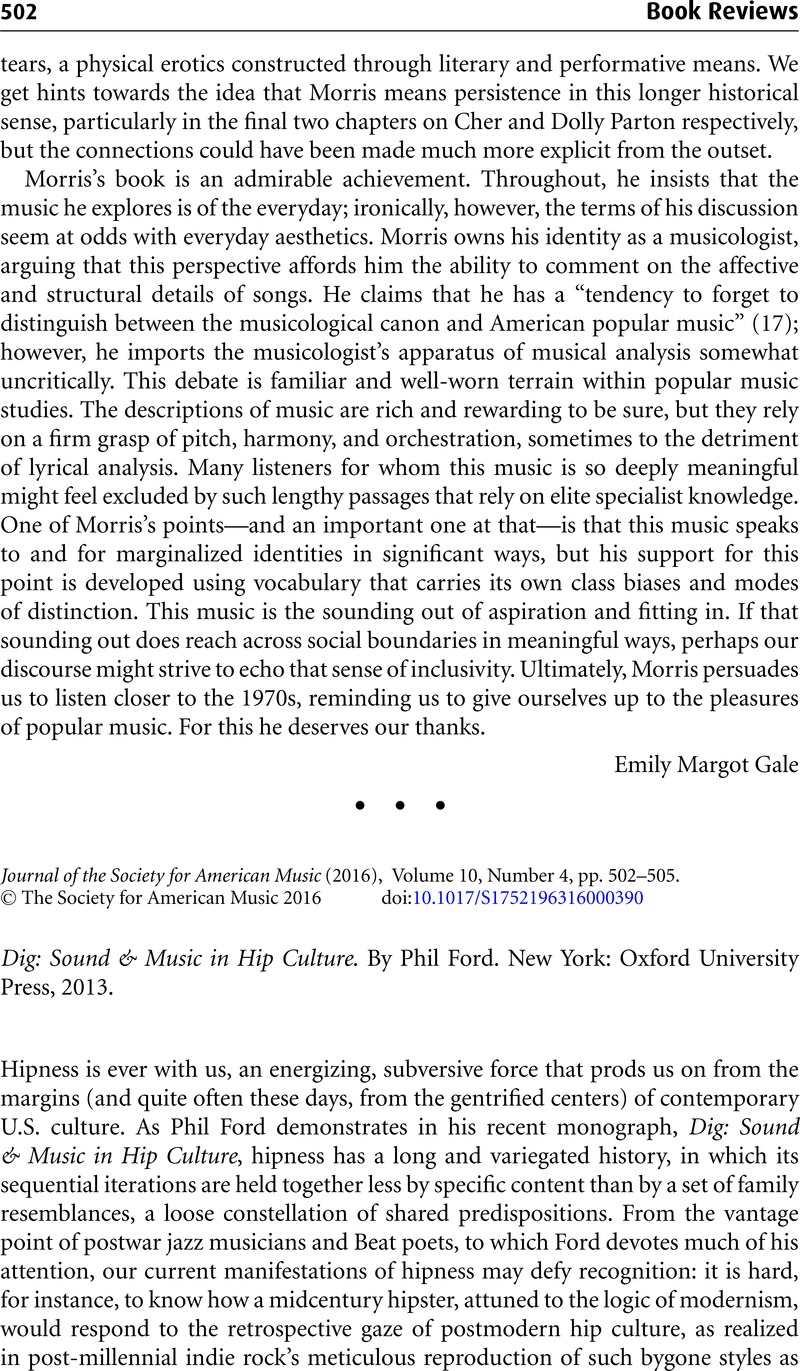No CrossRef data available.
Published online by Cambridge University Press: 27 October 2016

1 See for instance Hebdige, Dick, Subculture: The Meaning of Style (New York: Routledge, 1979 [2003])Google Scholar; Frank, Thomas, The Conquest of Cool: Business Culture, Counterculture, and the Rise of Hip Consumerism (Chicago: University of Chicago Press, 1997)CrossRefGoogle Scholar; Thornton, Sarah, Club Cultures: Music, Media and Subcultural Capital (Middletown, CT: Wesleyan University Press, 1996)Google Scholar.
2 Lott, Eric, “Double V, Double-Time: Bebop's Politics of Style,” in Jazz Among the Discourses, ed. Gabbard, Krin (Durham, NC: Duke University Press, 1995), 243–55Google Scholar; DeVeaux, Scott, The Birth of Bebop: A Social and Musical History (Berkeley, CA: University of California Press, 1997)Google Scholar; Ramsey, Guthrie, Race Music: Black Cultures from Bebop to Hip-Hop (Berkeley, CA: University of California Press, 2003)Google Scholar; Porter, Eric, What Is This Thing Called Jazz?: African American Musicians as Artists, Critics, and Activists (Berkeley: University of California Press, 2002), 54–100 Google Scholar.
3 Norman Mailer, “The White Negro,” Dissent (Summer 1957).
4 Daniel Patrick Moynihan, “The Negro Family: The Case for National Action” (Office of Policy Planning and Research, United States Department of Labor, March 1965).
5 On this point, see Hentoff, Nat, The Jazz Life (1961; New York: Da Capo, 1975), 138–42Google Scholar; Monson, Ingrid, “The Problem with White Hipness: Race, Gender, and Cultural Conceptions in Jazz Historical Discourse,” Journal of the American Musicological Society 48, no. 3 (1995): 403–4CrossRefGoogle Scholar.
6 On this point, as it pertains to hipness in early Cold War culture, see Ehrenreich, Barbara, The Hearts of Men: American Dreams and the Flight from Commitment (Garden City, NY: Anchor Press, 1984), 61 Google Scholar; cited in Phil Ford, Dig, 78.